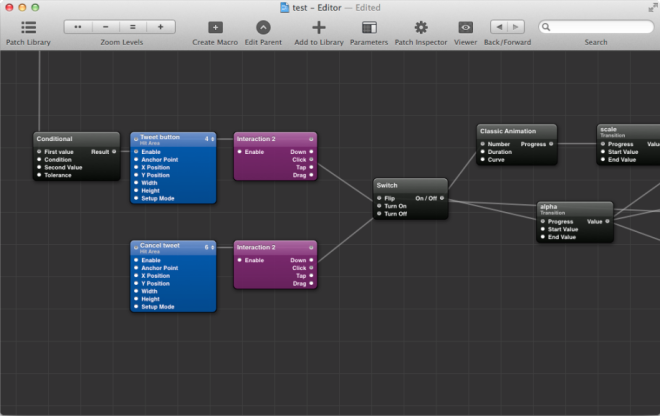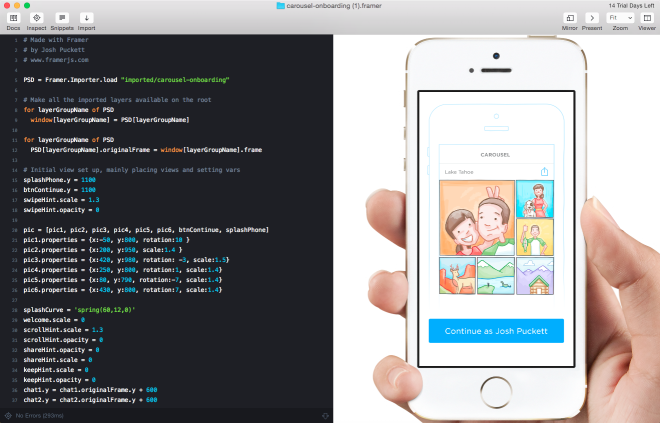Google and Facebook are two of the world’s most powerful companies and each has created a framework for building web apps. Angular and React respectively appear to be in a battle for the future of the web, with the active online debate and adoption for large consumer-facing apps seeming to lean quite strongly in React’s favour at present. Are they collectively taking over the front-end? Is React really leading? Our data from a broad cross-section of nearly 6,000 web developers may surprise you.

Which is your favourite framework? Take the Developer Economics Survey and win amazing prizes.
Although traditional, largely static, web pages still have an important place, mobile is now the dominant computing paradigm and mobile users have come to expect the interactivity of native apps. To attempt to match a native app experience, a web app cannot be entirely rendered on the server side, the page has to be changed dynamically on the client. The more extensive the changes the greater the need for a better abstraction than the DOM (Document Object Model) to manage the complexity. This has driven ever growing usage of third-party JavaScript libraries and frameworks.
Historically jQuery was the first library to get really popular, enabling easier manipulation of the DOM on the client side. It’s still the most popular today, as the primary front-end library for 34% of web developers. However, manually manipulating the DOM turns out to be extremely complex and error-prone when it’s happening extensively, so frameworks that provide a better abstraction are increasingly important. Overall just 12% of web developers don’t use any kind of framework and another 6% have written their own. That leaves 48% of web developers currently using a third-party framework other than jQuery as their primary way of doing front-end web development. Of those, Angular and React account for 30% of all usage, leaving all the others far behind. Indeed front-end web development is such a fragmented space that no other single library or framework accounts for more than 2% of primary usage. So React and Angular certainly lead other frameworks, although only around half of all web developers have fully embraced any single page application framework so far.
Angular is still king despite the React hype.
AngularJS (Angular 1.x) was the first single page app framework to get the stamp of approval from an internet giant, when Google started to back the open-source side project of one of their employees publicly. Google’s backing gave many large enterprises the confidence to adopt, and with broader adoption came a flourishing ecosystem of components and tools. As this was happening, React was built internally at Facebook and deployed on the Facebook newsfeed in 2011 and then Instagram’s web app in 2012. Yet React wasn’t released as open source until 2013, by which time Angular had an enormous lead in both adoption and ecosystem. Then in late 2014 Google appeared to stumble previewing Angular 2.0, which was going to be incompatible with Angular 1.x and use a new language. Reaction from the developer community was not good. By mid-2015 Google had agreed to work with Microsoft so that TypeScript became the official language for Angular 2.0, while the 1.x series had a promise of continued support, and a migration path between versions was created. This discontinuity for the Angular community seemed like a gift to the already rapidly growing React.
Although Angular still had many vocal fans, anyone following the broader front-end web developer community online would have to assume that React was taking Angular’s crown. At the time of writing React has passed Angular 1.x in terms of stars on their respective GitHub projects, with around 61,500 to 55,000. Angular 2.x trails both of these by far with 21,500. In the independent State of JavaScript survey run in late 2016, React came out way ahead of both versions of Angular in usage, interest, and retention. However, our own survey, which reaches out across many different developer communities does not reflect this result overall at all. Not only is Angular 2.x the primary framework for about as many developers as React (10% vs 9% globally), but Angular 1.x is still the most popular overall by a slim margin (11% use it as their primary framework). In total those using one or the other version of Angular number more than double those using React.

React is favoured by front-end specialists.
In order to see how reality in the market could be so different from the online buzz and even a large community survey, it’s interesting to look at the breakdown of JavaScript library and framework usage by primary programming language. If we only look at the users of the latest versions of JavaScript – those who like to stay at the forefront and are more likely to be found debating framework choices on the internet – we see React is the primary framework for 27% of them. So amongst those who have made the switch to ESNext (i.e. the 2015 version of the JavaScript standard or later), who then use tools to convert their code to the JavaScript that’s widely supported in browsers (known as ES5, introduced back in 2009), more are using React than both versions of Angular combined. However, this is the only group of developers for which React beats either version of Angular alone. These forward-looking JavaScript users are less than half of those primarily using JavaScript, and just 16% of all web developers (who almost all use some JavaScript).
A further 18% of web developers are still primarily using ES5. More of these are currently still using Angular 1.x (21%) as their primary framework than Angular 2.x (9%) and React (8%) combined. These developers are getting on with what they know and are productive doing. They may be following the new standards and frameworks but most of them don’t see enough benefit in switching yet. Another 3% of all web developers are primarily using TypeScript, which could be seen as the most advanced version of JavaScript currently available. However, some web developers understandably don’t want to adopt anything not yet in the standards, others don’t want to use the optional static types, and a significant minority still avoid anything from Microsoft. Given that Angular 2.x has adopted TypeScript it’s not surprising to find 41% of those primarily using the language have adopted the framework. There are another 18% currently still using Angular 1.x that will most likely migrate to Angular 2.x.
Backend web developers prefer Angular on the front-end.
After some flavour of JavaScript, the most popular language for web developers is PHP, with 21% still considering it their primary language. Given the focus on rendering pages server-side in most of the popular PHP content management systems, it’s not too surprising to find less interest in single page app frameworks in general amongst these developers, with 52% still using jQuery as their primary library. Interestingly only 3% of PHP developers are primarily using Angular 1.x, with 8% on Angular 2.x, and just 4% for React. In fact almost as many PHP developers don’t use any library or framework for the front-end (14%) as use React plus either Angular version.
Developers primarily using server-side languages other than JavaScript/Node.js or PHP (totalling 42% of all web developers) are significantly less likely to be using jQuery than PHP developers but they are also significantly less interested in Angular and React than the JavaScript developers (26% vs 38%). When they do primarily use one of these front-end frameworks, far more choose Angular (20%) than React (6%), and more of the Angular users are on version 2.x (11%) than version 1.x (9%). Considering all of those who are server-side developers not using Node.js, which is 63% of the web developer population, Angular is significantly preferred to React at this point, probably because it is complete framework, rather than forcing the developer to make lots of other library and tooling choices as they currently have to with React.
What happens next?
There are a many alternative futures that could be inferred from this data. The simplest story would be that framework preferences won’t move much for the different groups. Server-side developers will continue to have relatively little interest in the front-end frameworks and ES5 developers will stick to Angular 1.x when they eventually transition to ESNext or TypeScript. This doesn’t fit the current trend of increased JavaScript usage across the web, front-end and server. It also ignores the fact that Google will be migrating to Angular 2.x internally and developers will not want to be left without support one day. We could also imagine that as developers start using ESNext or TypeScript their framework preferences shift accordingly. Both React and Angular gain greater share, with React growing faster than Angular.
There’s probably some truth in this, but it’s too focused on the front-end developers. Server-side developers who aren’t using Node.js are less likely to find React attractive without a much simpler learning curve for the ecosystem. Then again, the most popular PHP framework is still WordPress, and the company behind WordPress has chosen React as the new front-end framework for WordPress.com – many PHP developers may follow them. Facebook has significant momentum with React, but Angular is likely to remain the most popular for smaller projects and internal apps. What we can predict is that despite the inevitable churn on the front-end, both frameworks have successfully built a critical mass of developers creating valuable ecosystems, and both are set for significant growth in the years ahead. We’d be surprised if the 30% of web developers using either Angular or React didn’t become 40% in the next 2 years.
So, what do you prefer? Angular or React? Take the Developer Economics Survey and win amazing prizes.





























